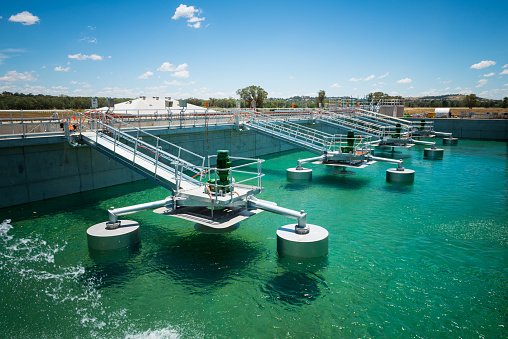
Waste water Treatment
Wastewater treatment is a process designed to remove contaminants and pollutants from water, making it safe for discharge into the environment or for reuse. This crucial process helps protect public health, preserve ecosystems, and mitigate environmental pollution. Wastewater treatment involves several stages to effectively treat and purify water before it is released back into rivers, lakes, or oceans.
Screening:
The first step in wastewater treatment involves the removal of large debris and objects through physical screening. This process prevents large materials such as sticks, leaves, and plastic from entering the treatment system and causing damage to pumps and equipment.
Primary Treatment:
During primary treatment, the wastewater is held in large tanks, allowing solid particles to settle at the bottom as sludge, while grease and lighter materials float to the surface as scum. The clarified water, or effluent, is then separated from the settled solids.
Secondary Treatment:
The secondary treatment focuses on biological processes to further purify the water. Microorganisms, including bacteria and other microorganisms, are introduced to break down organic matter present in the water. This can be done through activated sludge processes, trickling filters, or other biological treatment methods.
Tertiary Treatment:
Tertiary treatment is an additional step that provides further purification beyond primary and secondary treatments. It may involve advanced filtration, chemical treatment, or other specialized processes to remove remaining impurities, nutrients, and contaminants. Tertiary treatment is particularly important when the treated water is intended for reuse in non-potable applications like irrigation or industrial processes.
Disinfection:
To eliminate harmful microorganisms and pathogens, the treated water undergoes disinfection. This step ensures that the water meets regulatory standards for safe discharge or reuse.
Sludge Treatment:
The solid sludge generated during the treatment process undergoes further processing to reduce its volume and make it suitable for disposal or beneficial reuse.
Effluent Discharge or Reuse:
After undergoing these treatment stages, the water is either discharged into natural water bodies or, if treated to a high standard, reused for various purposes such as irrigation, industrial processes, or even indirect potable water reuse.
Benefits of Wastewater Treatment:
Environmental Protection: Wastewater treatment prevents the release of harmful pollutants into the environment, preserving water quality and safeguarding ecosystems.
Public Health: By removing contaminants and pathogens, wastewater treatment ensures that water bodies used for recreational or drinking purposes are safe for human contact.
Resource Conservation: Treated wastewater can be reused for non-potable purposes, reducing the demand for fresh water and promoting sustainable water management.
Compliance with Regulations: Wastewater treatment facilities adhere to environmental regulations and standards, ensuring responsible water management practices.
In summary, wastewater treatment is a vital process that plays a crucial role in protecting public health, the environment, and water resources. Advances in treatment technologies continue to enhance the efficiency and sustainability of wastewater treatment processes worldwide.
